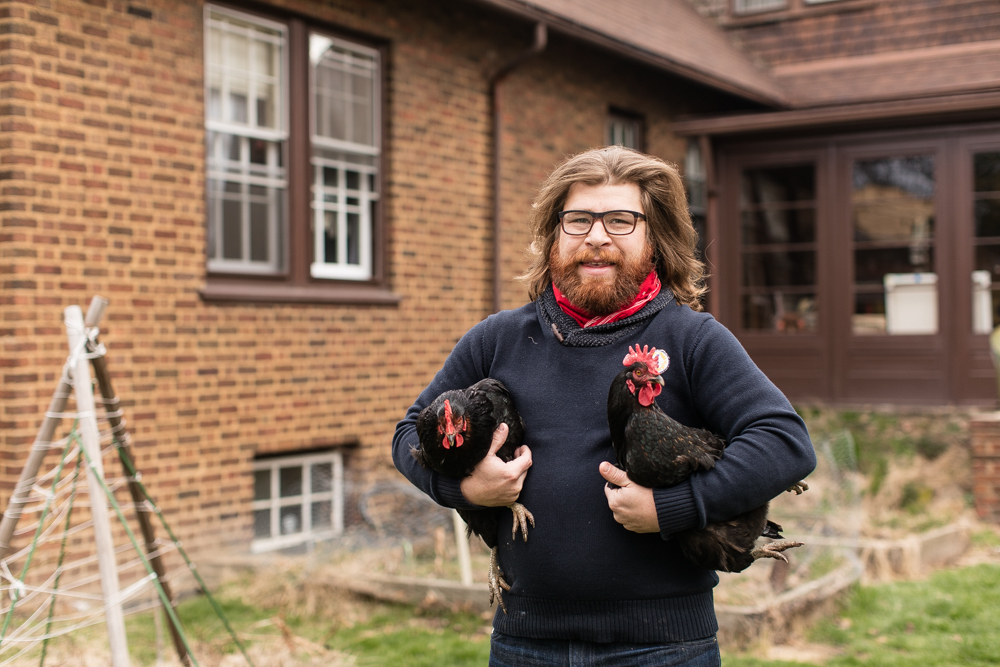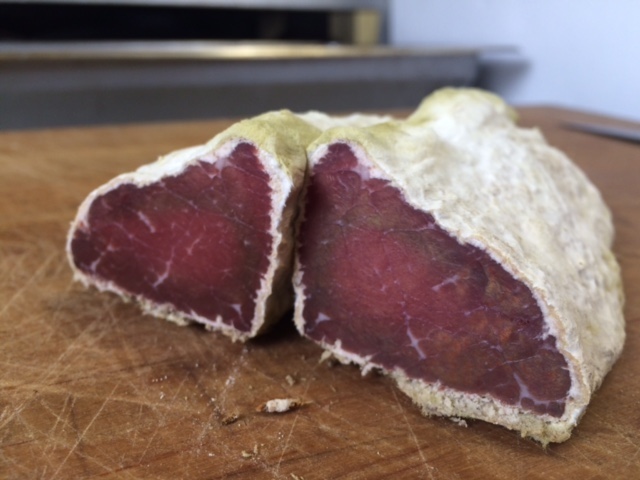By Sari Kamin
Chef Jonathon Sawyer has always played by his own rules. The Cleveland-based chef and restaurateur has been a major force in the revitalization the city has experienced in the last decade. His canon of restaurants includes NoodleCat , a Japanese-American mash up ramen shop; Trentina , an elegant exploration of Northern Italy’s cuisine; and The Greenhouse Tavern , Sawyer’s farm-to-table flagship. His ability to successfully execute such an eclectic collective of restaurants hasn’t gone unnoticed, either: he won the 2015 James Beard Award for Best Chef in the Great Lakes. So the seemingly indefatigable Sawyer surprised no one last November when he suggested his kitchen team at Trentina look for more ways to incorporate fermented products into their dishes at the upscale Italian restaurant.
Sawyer has been seriously tinkering with ferments since 2010, when he began to upcycle the undrunk wine and beer at The Greenhouse Tavern into his own line of homemade vinegars. A further home experiment making “beef” jerky for his kids out of tofu with shio koji , a Japanese seasoning and fermentation agent, led him to the revelation that koji could be incorporated into his dishes at Trentina.
 Chef Jonathon Sawyer’s new and delicious ways to recycle food led him right to an umami ingredient. Photo courtesy of Jonathon Sawyer
Chef Jonathon Sawyer’s new and delicious ways to recycle food led him right to an umami ingredient. Photo courtesy of Jonathon Sawyer
His obsession with fermentation was stoked by Jeremy Umansky, former house forager and larder master at Trentina. The pair had been exploring various preservation techniques when they agreed to develop a chickpea miso marinade for a vegan tofu sandwich to go on the lunch menu at Trentina. Being an Italian restaurant, Sawyer was determined to create an in-house miso with an ingredient traditionally used in Italian cooking. This, combined with his commitment to the indigenous products of Northeast Ohio, led him straight to the humble garbanzo.
The miso-making process introduced Sawyer and Umansky to koji: an enzyme-rich ingredient largely unknown in America, yet essential in many Japanese products like miso and soy sauce. Koji is the fungus that grows on rice, barley, soybeans, or corn after it is inoculated with a fermentation culture called Aspergillus oryzae. Not one to look outside his own kitchen for ingredients, Sawyer and Umansky got to work developing a house-made koji. And this is when, according to Chef Sawyer, “Jeremy’s mind exploded. ”
 Curing beef with mold yields a surprisingly tender, flavorful cut. Photo courtesy of Jeremy Umansky
Curing beef with mold yields a surprisingly tender, flavorful cut. Photo courtesy of Jeremy Umansky
Chef Sawyer and Umansky share a philosophy in the kitchen: nothing is wasted, and every ingredient must be multi-purposed. The koji they created to make the miso inspired Umansky to grow koji on different proteins as a potential way to cure and preserve the meat. A koji-cultured eye of round of Ohio beef yielded intense flavor and remarkable tenderness. Furthermore, the meat cured in far less time than traditional methods would have taken. When Umansky and Sawyer tested the method out on coppa, they discovered they were able to produce exceptional charcuterie in a matter of days, not weeks. Koji starts to grow after 42 hours, releasing enzymes that break down proteins efficiently without compromising flavor or texture. While it may seem like a no-brainer to cure proteins this way, it is, in fact, revolutionary: Umansky has done extensive research and claims that as far and he and Chef Sawyer know, “I straight-up developed this technique.” The TED Talk he recently gave on koji should dispel any doubts.
“Cooking” with koji is not without its challenges: the main one being how to convince customers to eat food covered with mold. With the exception of a few deliciously stinky cheeses, mold consumption does not appeal to the average diner. What distinguishes koji from the idea most people have of mold is its smell: yeasty, earthy, and fruity are just a few of the descriptives Sawyer uses. In fact, it was the smell that got him hooked.
“The aroma was so intoxicating,” he recalls. “We smelled champagne and apple. It was more alluring than anything I had read [about it].”
The smell of koji has been a powerful tool for Umansky in his quest to demystify what mold is to diners.
“It is just a natural byproduct of how the koji works when the enzymes break down and release wonderful aromas. It has to do with how it breaks down the sugars in the rice or barley and corn that it’s growing on. We ferment flours into sourdough starters and wheat ales, and those are aromas that we love.” Yet both men agree that they are still concerned about customers fleeing once they learn that their secret ingredient is a fungus.
 Jeremy Umansky preaching on the wonders of cooking with koji at TED. Photo courtesy of Jeremy Umansky
Jeremy Umansky preaching on the wonders of cooking with koji at TED. Photo courtesy of Jeremy Umansky
Chef Sawyer and Umansky have high hopes for the future of fermentation. They have successfully cured numerous types of proteins with koji, including lamb, pork, beef, scallops and salmon. A prototype of koji-fried chicken (KFC) is in the works. Still, they see the charcuterie as having the most potential for affecting change in the questionable world of conventional meat production. Umansky envisions an inexpensive and nutrient-dense product that could potentially bring some much-needed relief into food deserts and remote areas. .
“If someone were able to scale the production, they could essentially turn this into something like a Slim Jim without the food additives and chemicals, hopefully ethically sourced,” he says.
Large-scale production of koji-cured beef jerky may be a-ways off, but it’s already expanded: Umansky is now the chef and owner of Schmaltz Delicatessen and Bakery, opening soon in Cleveland Heights. The Jewish deli menu items will all benefit from koji and fermentation techniques that Umansky perfected in The Food Lab during his time at Trentina.
It’s clear that the meat revolution is here, and it began with mold.










